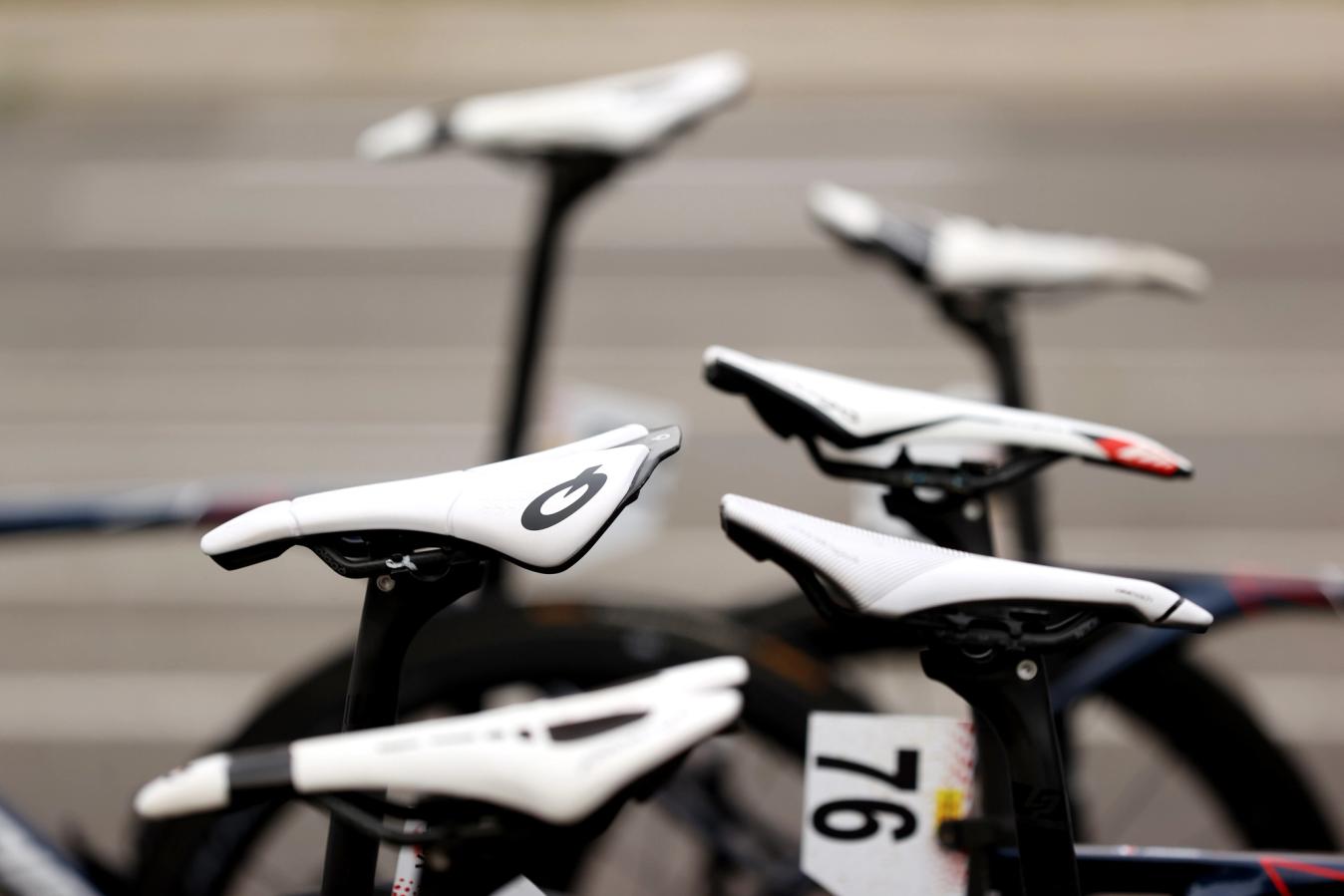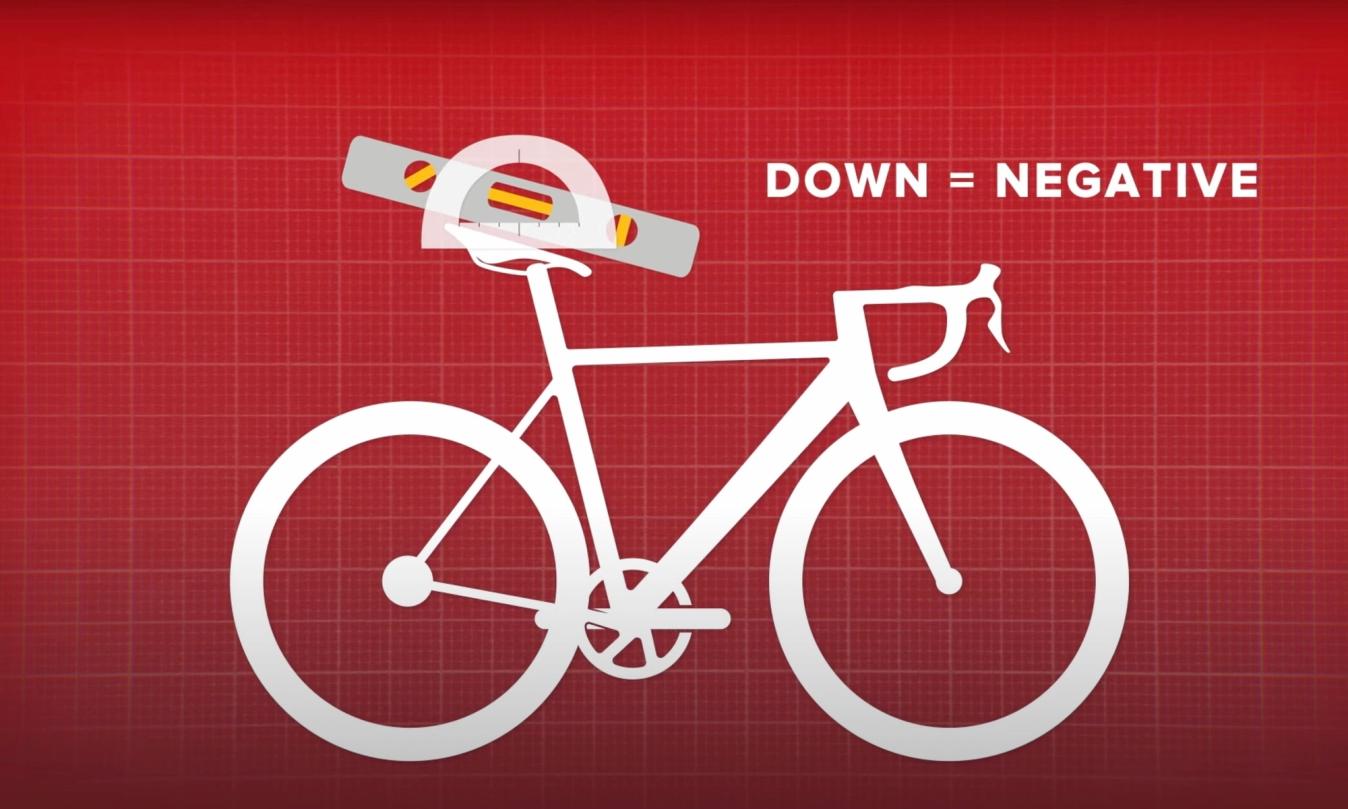Saddle angle - have we got it all wrong?
Flat or angled, what's best? We delve into the different ideas around saddle set-up
Alex Hunt
Junior Tech Writer
Many of us will have spent some time trying to find the perfect saddle, one that fits nicely with our body to give us comfort on a ride, but how many of us have tried a specific saddle angle?
The angle of your saddle is often given as a measurement in degrees away from being perfectly flat, and we have seen a trend in recent times for riders to be angling the nose of their saddle down. Is this just a fad, or is there actually some merit to finding an optimal saddle angle on your bike that isn’t just perfectly flat?

© GCN
Measuring your saddle angle should be done along the whole length of the saddle
Traditionalists will remain adamant that the saddle should be positioned perfectly flat and that any deviation from this can result in knee pain and back pain. The rationale behind this is that if the saddle is pointed down, you need to constantly stabilise yourself to stop yourself sliding forwards. On paper at least, this makes a lot of sense, however there have been some studies into this that point to a different conclusion.
Back in 1999, a study was carried out using fairly extreme saddle angles with a group of 80 leisure cyclists. With a saddle angle featuring the nose pointing down by between 10-15 degrees, riders noticed a reduction in reported back pain. Although this study looked specifically at leisure riders rather than the performance end of the spectrum, the conclusion is interesting.

© Velo Collection (TDW) / Getty Images
The studies in question both used very aggressive saddle angles, but the benefits can still be experienced at more modest angles
In a more relevant study carried out in 2021, a group of 19 different riders of varying fitness levels were asked to ride with a saddle angle with the nose pointing down by eight degrees. Interestingly, across the test sample, power on an uphill effort increased by 1.4 percent and maximum power improved by six percent.
The pros' rationale
There is a justification for having your saddle pointed down with riders such as Tadej Pogacar and Chris Froome using this set-up to much success.
This is something we have seen a lot in mountain biking for a while now as it is all to do with relative saddle angle on steep climbs. A lot of race winning moves or hard efforts tend to occur on a gradient, and this minimises the ability to shelter in the draft and get a tow. With a traditional setup with a flat saddle, as the gradient increases the saddle actually starts to point upwards relative to the horizontal plane.
This means that on a 10 percent gradient a flat saddle would actually be pointing five degrees upwards with that rising to 10 degrees on a 20 percent gradient. In an attempt to combat this, and in anticipation of the big efforts occurring on the steepest gradient in a race, riders will point their saddle down. This has the effect of creating a relative saddle angle far closer to horizontal whilst on the steeper gradients, with the aim to maximise pedalling efficiency where it matters most.
One thing that all bike fitters tend to agree on is that any saddle angle that points upwards will have a negative effect on comfort and on performance as it inhibits the rotation of the pelvis. This in turn moves all the rotation from the pelvis into the lower back, and in doing this there is an increased likelihood of back pain and a loss of power.

© GCN
A saddle with the nose pointed down, can also be referred to as a negative angle
The sport's governing body, the UCI, does actually have a maximum saddle tilt limit: currently the rules allow for a maximum saddle angle of nine degrees across the length of the saddle. However we are seeing these rules relax in line with bike fitting trends, as it was only back in 2015 that the maximum saddle angle was just 2.5 degrees.
In the video linked at the top, Conor Dunne talks to Bryan McCullogh from thebikethebody about the biomechanics of saddle fit and the positives and negatives of altering your saddle angle.
Saddle angle is something that is personal to all of us and our backsides, but the science is definitely pointing to the idea that a perfectly flat saddle might not be the go to set up. A few degrees tilt could reduce back pain and increase power and if this is something you are going to be trying let us know how it goes in the comments.
Latest Videos
1I Built A £17,000 Bike. WAS It REALLY Worth It?

2Pro On A £100 Bike VS Killer Climb!

3Why VO2 Max Is The GREATEST Predictor Of Lifespan | Dan's Journey Back to Health and Fitness (Pt. 2)

4The Hottest Bikes & Pro Tech Of The Giro d'Italia 2024

5Your Bike WILL Get Stolen, Unless You Do This! GCN Tech Show 331




.png?w=600&auto=format)


Froome-Legacy.jpg?w=600&auto=format)

